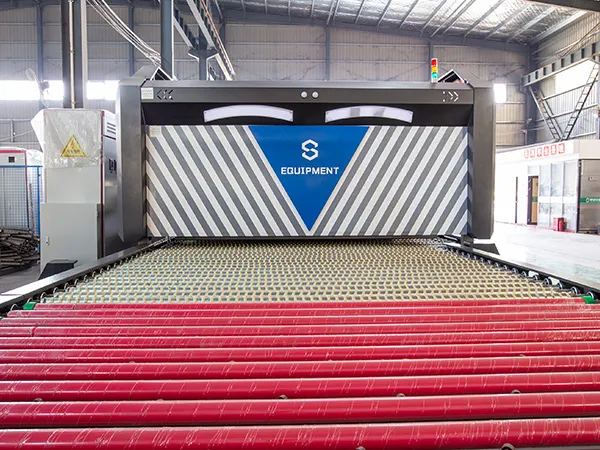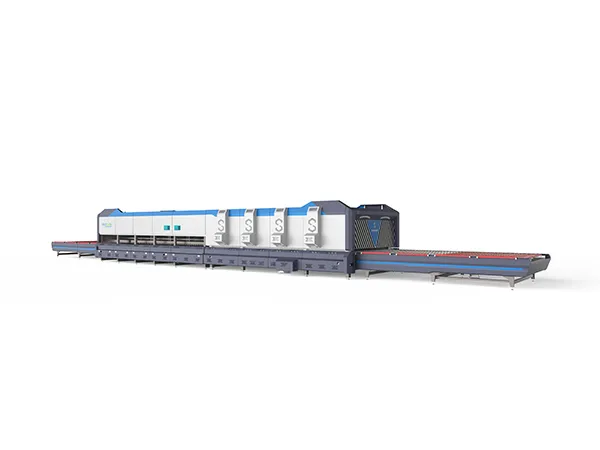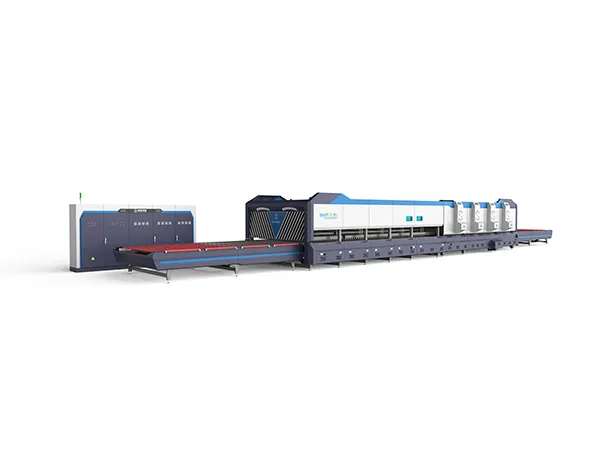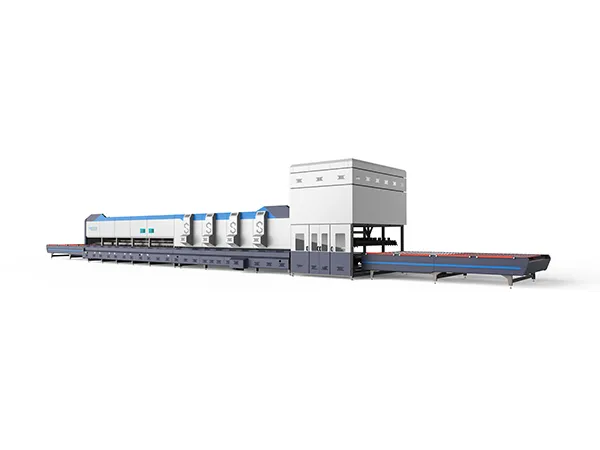Glass Tempering Furnaces are special furnaces used for steel smelting and dedicated to glass surface hardening, usually manufacturing products under high temperature and high pressure conditions, such as computer chips, optical fibers, ceramics and semiconductors. It is characterized by its ability to make ultra-fine enameled glass and transparent electric surface brazing agents, which are commonly used to produce high-precision glass products such as liquid crystal displays and optical fibers. Compared to traditional furnaces, glass tempering furnaces offer better thermal insulation, lower energy consumption and longer service life.
Glass Tempering Furnace is used to improve the strength and safety of glass by forming a compressive stress layer on the surface of the glass and a tensile stress layer inside through physical or chemical methods. Specifically, the working principle of glass tempering furnace is as follows:
1. Physical tempering method:
By heating the glass to a temperature close to the softening point (about 650°C) and then cooling it rapidly, compressive stress is generated on the surface of the glass and tensile stress is generated inside. This stress distribution makes the glass, when subjected to external forces, the compressive stress layer can offset part of the tensile stress, preventing the glass from breaking, thus improving its impact and bending strength.
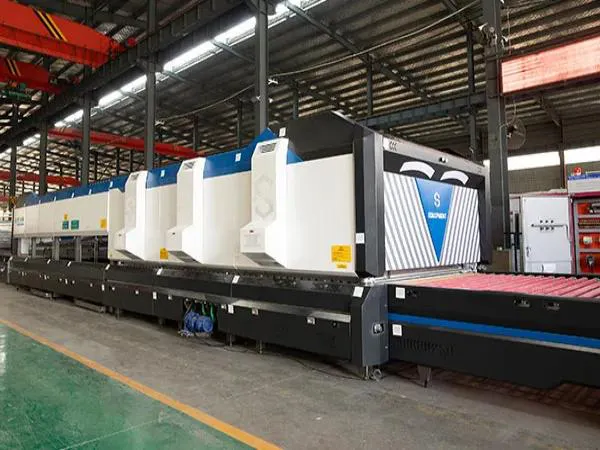
2. Chemical tempering method:
Through the process of ion exchange, a compressive stress layer is formed on the surface of the glass and a tensile stress layer is formed inside. This method is suitable for ultra-thin, small size or complex shape glass products. Chemical tempered glass has a higher surface compressive stress, but the internal tensile stress is smaller, so it is not easy to self-detonation and higher safety.
The formation steps of glass tempering furnace mainly include the following main processes: batching, melting, forming, heating, quenching and inspection into storage.
1. Ingredients: first of all, according to the designed formula, the various raw materials will be mixed evenly. To ensure the quality of glass.
2. Melting: The raw materials will be melted under high temperature to form a uniform glass liquid without bubbles. The melting process is usually carried out in a melting kiln, of which there are two types: the crucible kiln and the pool kiln. Crucible kilns are used for the production of optical glass and colored glass, while bath kilns are used for the production of most types of glass, mostly in continuous production.
3. Forming: the melted glass liquid into products with a fixed shape. Forming methods include manual and mechanical forming.
4. Heating: The glass sheet is put into the tempering furnace for heating. During the heating process, the temperature of the inner and outer layers of the glass is different, with the outer layer at a high temperature and the inner layer at a low temperature, resulting in the expansion of the outer layer while the inner layer does not expand, forming temporary compressive stress.
5. Quench: The heated glass sheet enters the air grill for quench. During the cooling process, the temperature of the surface layer drops faster than that of the center layer, and the contraction of the surface is suppressed by the inner layer, forming compressive stress, while the inner layer forms tensile stress.
6. Inspection and storage: Finally, the tempered glass is inspected and the qualified products are stored for use.
Through these steps, the glass tempering furnace is able to transform ordinary glass into higher strength tempered glass, which is very tough, strengthened by high temperature, and not easy to break. Even if it breaks, it is not sharp and is much safer.
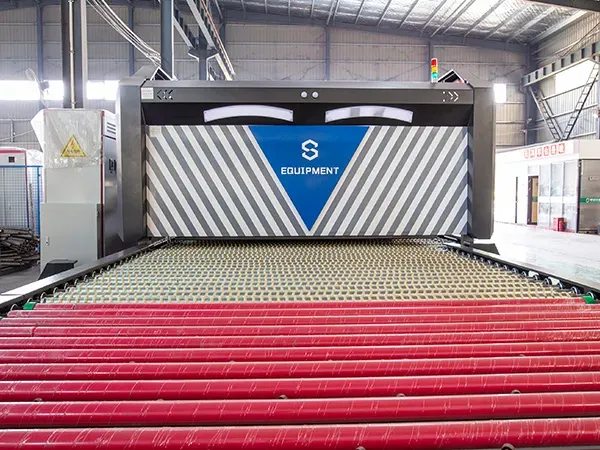
In summary, it is the glass tempering furnace can produce more durable and strong tempered glass, reduce energy loss, less prone to failure or damage, and the harm factor to people is very small, so that it can be widely used in high-temperature equipment, construction, automobiles, airplanes and spacecraft and other fields.




